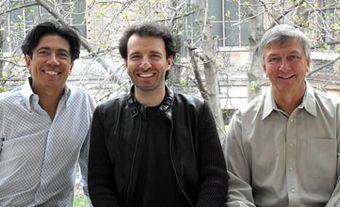
Canadian Opera Company
The Canadian Opera Company, of Toronto, is Canada's leading producer of OPERA and the sixth largest producer in North America. The Canadian Opera Company evolved from the Opera Festival Association, founded by Nicholas GOLDSCHMIDT and Herman Geiger-Torel in 1950, to the Canadian Opera Association in 1960 and the Canadian Opera Company in 1977. There have been 3 General Directors since Geiger-Torel's retirement: Lotfi Mansouri, from 1976 to 1988, and Brian Dickie, from 1988 to 1993. From 1994 to 1997, the Canadian Opera Company was led by Artistic Director Richard Bradshaw and General Manager Elaine Calder. In January 1998, Richard Bradshaw was named general director, the third in the Company's history. The COC has an annual operating budget of $14.5 million.The Canadian Opera Company supports and advances Canadian artists and works through its Ensemble Studio and Composer-in-Residence programmes. The Ensemble Studio, founded in 1980, consists of 6 or 7 Canadian artists selected from annual auditions who spend a minimum of one year with the COC receiving coaching in voice, language and movement; understudying principal roles; and performing in school tours, promotional events and mainstage productions. The Composer-in-Residence programme, founded in 1987, continues the COC tradition of commissioned works, including Louis Riel (1967) and Mario and the Magician (1992), composed by Harry SOMERS; Guacamayo's Old Song and Dance (1991), by Vancouver composer John Oliver; Nosferatu (1993), composed by Randolph Peters; and Red Emma (1994), composed by Gary KULESHA. In 1999, the COC presented The Golden Ass, composed by Randolph Peters on a libretto by Robertson DAVIES.
The company actively seeks ways to develop and broaden the audience for opera and increase the art form's accessibility. Toward this end, the COC is responsible for the development of surtitles. First used in the company's production of Electra in 1983, this technology provides a synopsis in English of the singers' words, projected on a screen above the stage. Based on overwhelmingly positive audience response, many opera companies throughout North America and Europe have adapted the use of surtitles, including the Metropolitan Opera of New York.
The Canadian Opera Company's recent double bill production of Béla Bartók's Bluebeard's Castle and Arnold Schoenberg's Erwartung became an international signature piece for the company. Directed by Robert LEPAGE, designed by Michael Levine and conducted by Richard Bradshaw, the production has garnered critical acclaim in Toronto and New York, received the Edinburgh International Festival's highest awards, and opened the 1994 Melbourne International Festival. Productions by film directors Atom EGOYAN and François Girard (Salome and Oedipus Rex with Symphony of Psalms) further established the COC's identity for innovative work.

 Share on Facebook
Share on Facebook Share on X
Share on X Share by Email
Share by Email Share on Google Classroom
Share on Google Classroom


